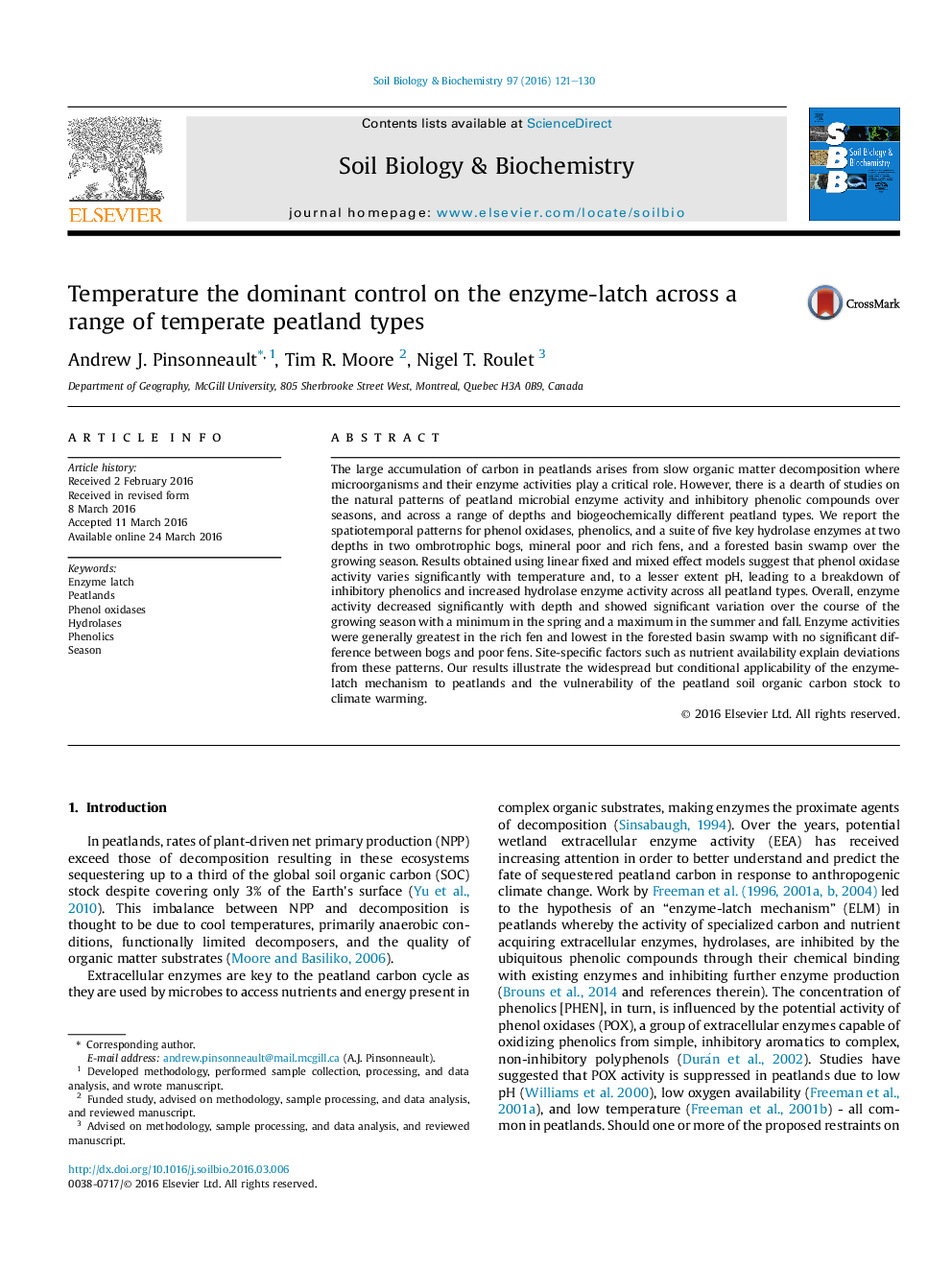| Article ID | Journal | Published Year | Pages | File Type |
|---|---|---|---|---|
| 2024327 | Soil Biology and Biochemistry | 2016 | 10 Pages |
Abstract
The large accumulation of carbon in peatlands arises from slow organic matter decomposition where microorganisms and their enzyme activities play a critical role. However, there is a dearth of studies on the natural patterns of peatland microbial enzyme activity and inhibitory phenolic compounds over seasons, and across a range of depths and biogeochemically different peatland types. We report the spatiotemporal patterns for phenol oxidases, phenolics, and a suite of five key hydrolase enzymes at two depths in two ombrotrophic bogs, mineral poor and rich fens, and a forested basin swamp over the growing season. Results obtained using linear fixed and mixed effect models suggest that phenol oxidase activity varies significantly with temperature and, to a lesser extent pH, leading to a breakdown of inhibitory phenolics and increased hydrolase enzyme activity across all peatland types. Overall, enzyme activity decreased significantly with depth and showed significant variation over the course of the growing season with a minimum in the spring and a maximum in the summer and fall. Enzyme activities were generally greatest in the rich fen and lowest in the forested basin swamp with no significant difference between bogs and poor fens. Site-specific factors such as nutrient availability explain deviations from these patterns. Our results illustrate the widespread but conditional applicability of the enzyme-latch mechanism to peatlands and the vulnerability of the peatland soil organic carbon stock to climate warming.
Related Topics
Life Sciences
Agricultural and Biological Sciences
Soil Science
Authors
Andrew J. Pinsonneault, Tim R. Moore, Nigel T. Roulet,
